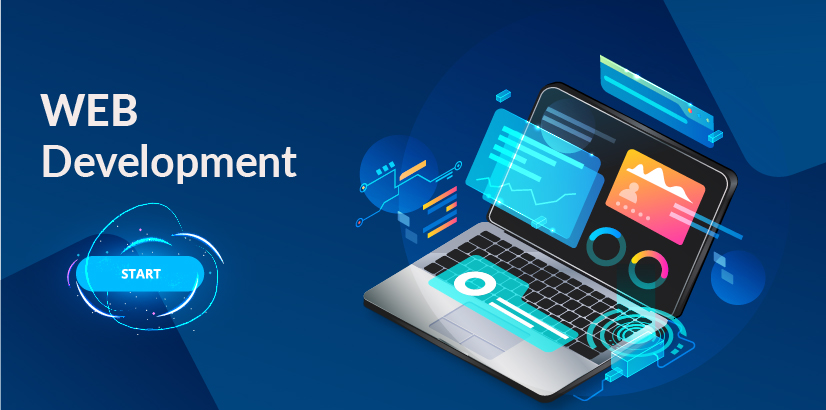Employers and job seekers are connecting through Internet platforms as employment opportunities get more competitive. The Advanced Job Portal Website features a dedicated section for startup reviewers, providing them with a platform to share their insights and experiences with aspiring entrepreneurs. Creating a cutting-edge job portal website is a profitable endeavor, and laravel is the best framework for the job due to its scalability and rich feature set. This post will walk you through the crucial processes for developing a state-of-the-art job site with laravel in 2024, making sure it satisfies users’ contemporary demands while upholding high performance and security standards.
Introduction to Laravel Development for Job Portals
PHP framework Laravel is well-known for its advanced syntax and robust capabilities, which make it a great option for creating intricate web applications like job portals. In 2024, Laravel offers the resources required to create a platform that not only satisfies but also beyond user expectations, as the market for simple and easy-to-use job portals continues to expand.
Why Choose Laravel Development for Building a Job Portal?
The modular design, scalability, and large library of pre-built packages that make Laravel unique. It is compatible with MVC design, which divides the user interface and business logic to simplify and organize development. A successful branding strategy for an advanced job portal website can establish it as the go-to platform for both job seekers and employers, fostering trust and driving significant user engagement. The job portal is not only useful but safe and simple to maintain thanks to Laravel’s built-in capabilities, which include the Blade template engine, Eloquent ORM, and strong security measures.
Key Features of an Advanced Job Portal Website
In order to be successful in 2024, a job portal needs to have these features:
User Registration and Profile Management: Enable users to build profiles, submit resumes, and manage their personal data through user registration and profile management.
Advanced Search and Filtering: Job searchers can look for employment based on a variety of parameters, such as location, industry, and income range, with the use of advanced search and filtering.
Job Posting and Management: Provide companies the ability to publish job openings, handle applications, and get in touch with applicants.
Real-Time Notifications: Alert users to updates on the progress of their applications, new job ads, and other significant events.
Responsive Design: Use responsive design to ensure the site is usable on all platforms, including tablets and smartphones.
Secure Payment Processing: Integrate payment gateways for premium job postings and subscriptions to ensure secure payment processing.
Step-by-Step Guide to Building a Job Portal with Laravel Development
Using Laravel to create an advanced employment site requires careful planning, robust development techniques, and extensive testing. Below is a step-by-step guide that takes you through the entire development process, from requirement analysis to deployment.
1. Requirement Analysis
The first step in developing a job portal is understanding the project requirements. This involves:
- Identifying Stakeholders: Determine who will use the portal (job seekers, employers, admins) and their specific needs.
- Defining Core Features: Outline essential features like user registration, job postings, application management, search functionality, notifications, and payment processing.
- Setting Goals and Objectives: Define the goals of the portal, such as user engagement, ease of use, and scalability.
- Creating a Project Plan: Develop a timeline for the project, including milestones for design, development, testing, and deployment.
2. Designing the Architecture
With the requirements in hand, design the architecture of the job portal:
- Database Design: Create a detailed database schema with tables for users, jobs, applications, companies, transactions, etc. Consider using Laravel’s migration system to manage database changes.
- System Architecture: Design the overall structure of the application, including how different modules will interact, such as user management, job listings, and payment processing.
- UI/UX Design: Design wireframes and mockups for the user interface. Focus on creating an intuitive user experience that caters to different user roles.
3. Setting Up the Development Environment
Before you start coding, set up the development environment:
- Install Laravel: Use Composer to install Laravel and set up a new project.
- Configure Environment Settings: Set up environment variables (like database credentials) in the .Env file.
- Version Control: Initialize a Git repository for version control and set up a remote repository on GitHub, GitLab, or Bitbucket.
- Set Up Local Development Server: Use tools like Laravel Valet or Homestead to create a local server environment.
4. Developing the Core Modules
4.1 User Authentication and Authorization
- Implement Authentication: Use Laravel’s built-in authentication scaffolding (Laravel Breeze, Jetstream) to create login, registration, and password reset features.
- Role-Based Access Control (RBAC): Implement RBAC to differentiate access levels for job seekers, employers, and admins using Laravel’s policies and gates.
4.2 Job Listings and Management
- Create Job Models and Controllers: Define Eloquent models for job postings and develop controllers to handle CRUD operations.
- Develop Job Posting Form: Create forms for employers to post jobs, ensuring that all necessary fields (title, description, location, salary, etc.) are included.
- Implement Search Functionality: Use Laravel Scout along with a search engine like Elasticsearch to implement advanced search and filtering options for job seekers.
4.3 Employer and Job Seeker Dashboards
- Employer Dashboard: Develop a dashboard where employers can manage job postings, view applicants, and track job performance.
- Job Seeker Dashboard: Create a dashboard for job seekers to manage their profiles, view saved jobs, and track applications.
4.4 Payment Integration
- Set Up Payment Gateways: Integrate payment gateways like Stripe or PayPal using Laravel Cashier to handle subscription fees for premium listings or membership plans.
- Implement Subscription Models: Allow employers to choose different subscription plans with varying levels of access and features.
4.5 Notifications and Alerts
- Implement Email Notifications: Set up email notifications using Laravel’s Mailables for actions like job application submissions, job posting approvals, and more.
- Real-Time Notifications: Use Laravel Echo and Pusher to implement real-time notifications for instant updates on job applications, messages, and other critical events.
5. Testing the Application
5.1 Unit Testing
- Write Unit Tests: Use PHPUnit to write unit tests for individual components and functionalities, ensuring each part of the application works as expected.
- Test Models, Controllers, and Routes: Focus on testing Eloquent models, controllers, and routes to ensure they handle data and requests correctly.
Read: How can Artificial Intelligence be used for Personalized Email Marketing?
5.2 Integration Testing
- Test User Flows: Write integration tests to ensure that different parts of the application work together seamlessly, such as the user registration process or job application submission.
- Test Payment Process: Ensure the payment gateway integration works smoothly by simulating various payment scenarios and handling errors.
5.3 Browser Testing
- Use Laravel Dusk: Perform automated browser testing with Laravel Dusk to verify that the application works correctly across different browsers and devices.
6. Deployment
6.1 Preparing for Deployment
- Optimize the Application: Use Laravel’s built-in tools to optimize the application for production, including caching, minifying assets, and optimizing routes.
- Set Up a Production Server: Choose a reliable hosting service (like AWS, or DigitalOcean) and configure the server environment, including PHP, MySQL, and other necessary software.
- Environment Configuration: Ensure the production environment variables are correctly set up in the .env file.
6.2 Deployment Process
- Deploy the Code: Use Laravel Forge or Envoyer to automate the deployment process, including setting up the server, deploying the code, and managing environment variables.
- Run Migrations: Run Laravel migrations on the production server to set up the database schema.
- Set Up Monitoring and Backups: Implement monitoring tools to keep track of application performance and set up regular backups for the database and application files.
7. Post-Deployment Considerations
7.1 User Onboarding and Feedback
- Create User Guides: Provide documentation or tutorials to help users (employers and job seekers) get started with the portal.
- Gather Feedback: Implement feedback forms or surveys to gather user feedback for continuous improvement.
7.2 Maintenance and Updates
- Regular Updates: Keep the Laravel framework and all packages up to date to ensure security and performance.
- Monitor Performance: Regularly monitor the application’s performance and make necessary adjustments to optimize speed and responsiveness.
Top Laravel Development Packages for Job Portal Building
To speed up development and add advanced features, leverage Laravel packages such as:
- Spatie Laravel Permissions: For handling user roles and permissions.
- Laravel Socialite: To enable social media login integration.
- Laravel Cashier: This is for managing subscriptions and payment processing.
- Laravel Scout: This is for implementing full-text search and filtering.
Conclusion: Laravel Development for Building Job Portal
Building an advanced job portal in 2024 with Laravel development is a rewarding venture that combines the power of a robust framework with the flexibility to create a feature-rich, user-friendly platform. By following the steps outlined in this guide and staying informed about the latest industry trends, you can develop a job portal that stands out in the competitive job market and provides value to both employers and job seekers. An Advanced Job Portal Website could feature a dedicated section for job seekers with experience in developing grocery delivery apps, connecting them with companies seeking skilled mobile app developers. Laravel’s extensive features and active community support ensure that your job portal will be scalable, secure, and ready for the challenges of the modern web.











